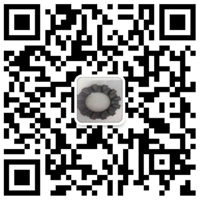Insulated iron powders are alternative materials to conventional soft magnetic materials such as steel
sheet laminations used in electrical machines. Most of the magnetic structures of existing electrical
machines with AC excitation were optimized during the 20th century for 2D flux circulation in
laminated yokes. Now with the isotropic composite materials new designs can be used to optimize
the materials in terms of technical and economic performance. The 3D design optimization permits to
meet the application specifications taking into account the magnetic, thermal and mechanical
properties of the materials as well as the cost of the production and assembly process. In this paper,
the characteristics and properties of typical composite powders are presented together with a design
optimization methodology. This methodology was successfully adopted for investigating the potential
applications of composite powders in several sectors such as automotive, electro-domestic and
lighting industry.
The soft magnetic materials traditionally used in AC applications are steel laminations. Now there are
also iron-based powders specifically engineered for magnetic applications in alternating fields called
soft magnetic composites or SMC. Although they have lower maximum permeability and magnetic
induction than laminations, they possess isotropic properties that give end users and designers the
possibility to make various electromagnetic devices with a topology more adapted to the final
application. Also an important feature of SMC that contributes to their increasing acceptance is the
ease of prototyping. Therefore the preferred approach for the feasibility study of a given project,
consists in modeling of the application, design optimization and building of a prototype by machining
a larger workpiece of pressed SMC.
Some characteristics and properties of two SMC materials are presented together with a design
optimization methodology. This latter was successfully adopted for investigating the potential
applications of SMC and examples are presented in the automotive (brush & brushless DC motors),
electrodomestic (universal motor) and lighting industries (inductor).
SMC AND DESIGN OF ELECTROMAGNETIC DEVICES
For any application, electrical machine designers must find an optimal compromise between the
specifications, topological structures, device dimensions, material properties and production process
costs. The characteristics of the soft magnetic material technology that is used have a strong influence
on the optimal design solution. Now in addition to the various traditional steel sheet laminations,
SMC are also available. Hence for each soft magnetic material option, there is a specific optimal
solution because the magnetic, thermal and mechanical properties, as well as the cost of production
and assembly process may be different.
The steel sheet lamination technology takes advantage of high saturation induction and high
permeability of iron with limited Eddy current losses. Several grades of laminated materials have
been developed in order to adapt to different specifications and cost-performance compromises for
a wide range of applications. But this well established and efficient technology also presents some
drawbacks: several production steps required to realize a typical magnetic circuit, low heat
dissipation coefficient in the direction perpendicular to the plane of the laminations, significant scrap
loss during the punching process, difficult and expensive recycling process for electrical machine
armatures and as the frequency of the application increases, the use of laminated materials is limited
by the cost, feasibility and processing of thin sheets.
In the past, designers have developed and optimized electromagnetic structures only for 2D magnetic
flux circulation. This specific constraint of the laminated material technology has limited the available
number of topological structures that can be used to design electrical machines. Despite their
relatively low values of unsaturated permeability, the SMC present many interesting characteristics,
which can improve the performance of electromagnetic devices, if they are properly used during the
design process: - the number of production steps can be reduced (magnetic circuit pressed in a single
operation or assembled from several pre-pressed parts) - high performance magnetic structures can
be designed with complex shapes, which are too difficult or too expensive to realize with laminated
materials- the magnetic isotropy allows the design of new electrical machine structures with a
3D circulation of the magnetic flux that can reduce the weight of the inactive copper, simplify the
machine windings and reduce their production cost - the thermal isotropy and good thermal
conductivity improve the heat dissipation (from the whole external surface) of electromagnetic
devices - the vibrations and audible noise of electromagnetic devices can be reduced [8] -
the recycling process of electrical machine armatures is improved because the separation of iron
powder and copper is easier than in the case of laminations [9] – and finally an integrated design
approach can be applied where the thermal, electromagnetic and mechanical functions can be
integrated in a single part.




 Copyright © 2016 Shenzhen City Ri Shengchang Magnet Technology Co., Ltd All Rights Reserved.
Copyright © 2016 Shenzhen City Ri Shengchang Magnet Technology Co., Ltd All Rights Reserved.